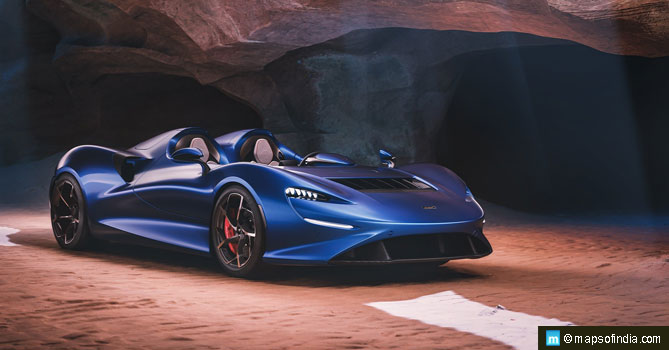
British sports car manufacturer McLaren cars were founded in the year 1985. Seven years later, they introduced their first-ever performance car – the McLaren F1, which went on to take its position among the fastest cars in the world. It gave the Italians a sprint for their money, and the sheer numbers of its performance output were enough to make most sportscars tremble in their tyres. It was based on a concept developed by Gordon Murray and supported by Ron Dennis.
McLaren cars were initially registered as a dormant company before it went on to become McLaren Automotive in the year 2010. It wasn’t until then that they came out with their second high-performance car the MP4-12C. McLaren Automotive is based at the McLaren Technology Centre in Surrey and is an entirely owned subsidiary of the McLaren Group of Companies.
Following the 12C was the P1, which became the second car in the ultra-high-performance series of sportscars called the ultimate series. Next in line behind the P1 came the McLaren Senna and the Speedtail.
The latest addition to this series is also the world’s first-ever open-cockpit road car and is called the McLaren Elva. Inspired by the open-top racecars of the 1960s, which were designed and developed by Bruce McLaren, the Elva is also one of the lightest production cars to have ever been built.
McLaren Elva – Styling and Design
The Elva however, is about much more than just performance and luxury. It has a lot more power than its predecessor Senna, with less downforce and breathtaking style. The Elva has no windscreen in the front and is more about the whole experience of being behind the wheel than just speed and torque.
The company has always worked towards pushing the boundaries of performance car development and the relentless pursuit of unparalleled driving experiences. The Elva finds its very roots in such endeavours that define the ideas behind McLaren’s ultimate series of cars.
The exterior yells “Italian supercar” with a distinct touch of McLaren’s design philosophy and the absence of a roof and windscreen makes the car all the more alluring. The company claims that buyers can opt to have a windshield and roofline fitted to the car as per their requirement.
Design innovation – the bubble of calm
The car employs McLaren’s new Active Air Management system (AAMS) which has been designed and developed to manipulate the air-flow around the cockpit of the car. Just over 30 miles an hour (40-45 kilometres), the air flowing through the vents at the front of the car is forced out of a large set of vents on top of the hood at a hundred and thirty-degree angle.
This stream of air gets stronger as the speed increases and causes direct air-flow approaching from the front of the vehicle to be deflected upward. This manoeuvre of air creates a bubble around the cockpit when the car is in motion. Called the “bubble of calm”, the airplay around the car even makes it possible for the passengers to have a pleasant, casual conversation while driving around in the car.
Melodious exhaust note
The exhaust system has also been thoroughly experimented and played around with. It is called “Nirvana” based on the fact that it produces the best symphony of engine exhaust notes that can come from a twin-turbocharged motor. Two of the four exhausts are placed huddled to each other and face upward, while the other two are placed slightly apart and face away from the car’s rear end, causing a “bass and treble” effect like a large sound system.
Power and Transmission
Power comes from a 4.0-litre V8 engine with twin-turbochargers, that makes the car go from zero to 100 kilometres an hour (kmph) in less than three seconds. It takes only 6.7 seconds to cross the 200 kmph mark and keeps going without a hiccup. The engine is mated to a seven-speed twin-clutch gearbox and produces over eight hundred horsepower.
The engine is still only half of this recipe for thrill and exhilaration. The second half is brought in by a chassis made entirely of carbon-fibre, a non-existent roofline, electro-hydraulic power steering with impeccable turn-in feedback and 390 mm carbon-ceramic brakes with titanium callipers.
The rear end sports a full-width active spoiler which has a dynamic function and works in complete collaboration with the rear diffuser with fences to keep the tail down, even after crossing the 280kmph mark. This kind of technology is Formula 1 territory. Its name comes from the M1A Elva, which was a group 7 McLaren race car designed and developed in the 1960s.
Price and Exclusivity
It will be a pretty exclusive car too, with just three hundred and ninety-nine models being produced, and will rival the likes of the Ferrari SP1. It will also be extravagantly priced, with a buyer’s tag of 1.4 million pounds and a few thousand in change.
Related Links:




